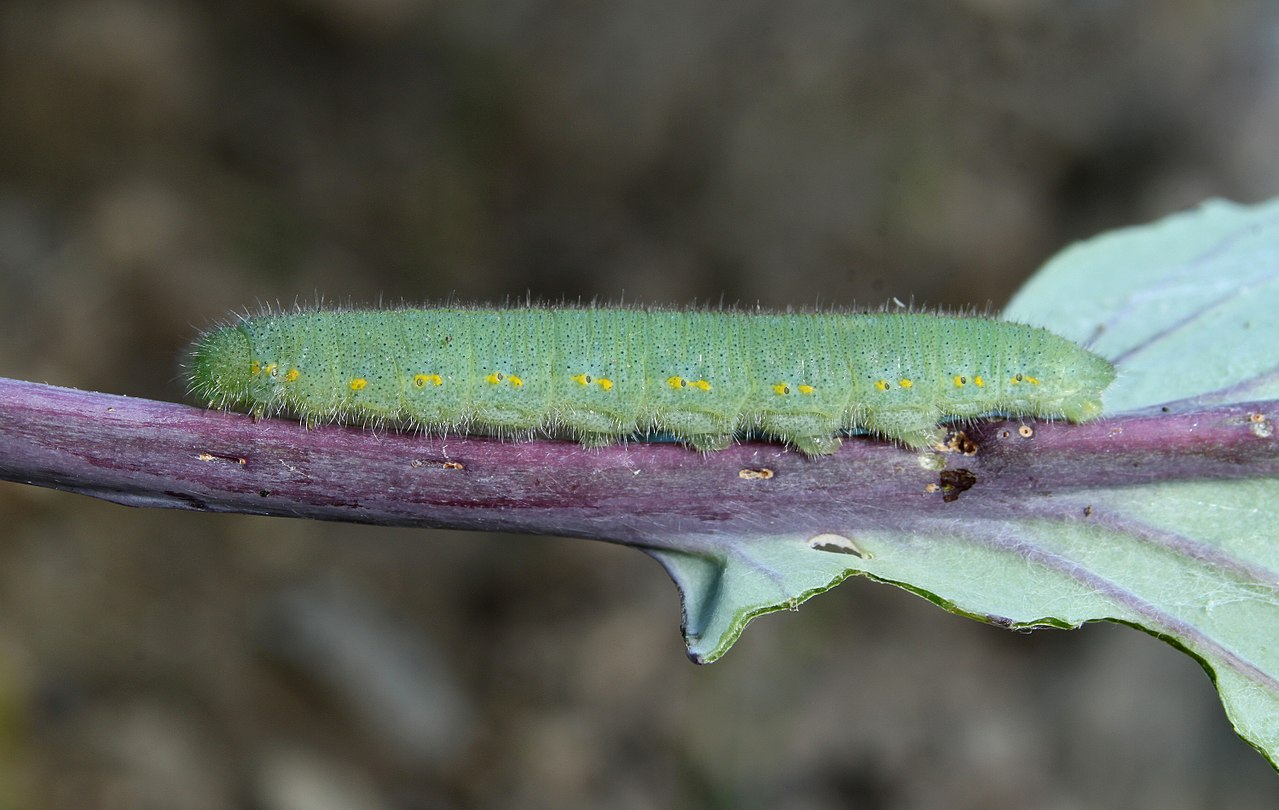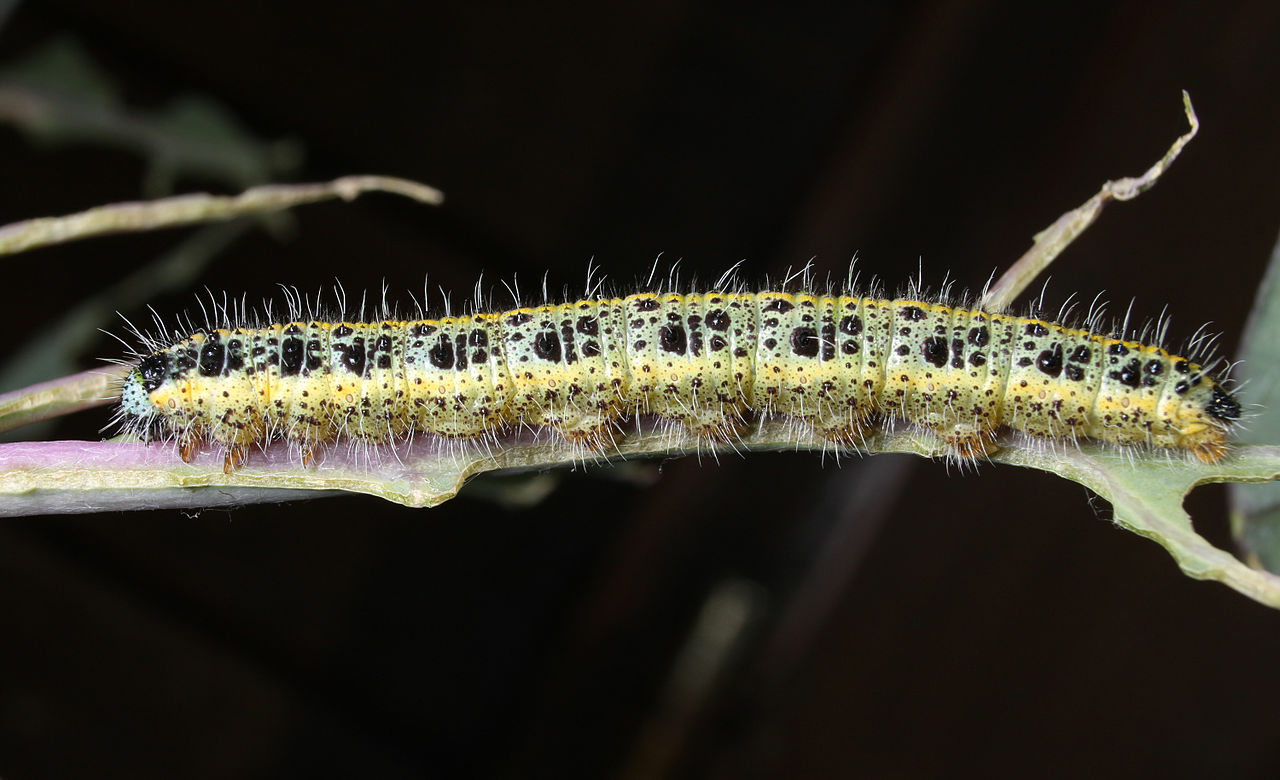Cabbage white
How to get rid of the pests
The caterpillars of both the small (green) and large (yellow with black dots) cabbage white butterflies eat the leaves within a short time. This greatly reduces the yield and can lead to total crop failure.
Treatment

From the end of May to the end of June, white moths lay yellow eggs in colonies on the undersides of the leaves of cruciferous plants. To prevent infestation, these should be located and removed (crushed). In case of infestation, the caterpillars should be collected and the plants sprayed with wormwood, tansy or tomato leaf tea. Sprinkling with (algae) lime can also help. Ichneumon flies can be used as beneficials and netting can prevent egg laying. Mixed crops of tomatoes, celery and spinach will also deter the cabbage white butterfly.
Affected plants

Cruciferous plants, especially cabbage or radish leaves, but also wild plants.
Other information
Most damage is caused by the small cabbage white butterfly with its green caterpillars. The main infestation occurs from June onwards. However, the large cabbage white butterfly can also be very voracious in the second generation from July to September.
Attention: If you want to use nettle slurry to strengthen your plants, you should be careful. The use of the slurry may attract cabbage white butterflies.
https://pixabay.com/de/photos/schmetterling-kohlwei%C3%9Fling-l%C3%B6wenzahn-4398127/

